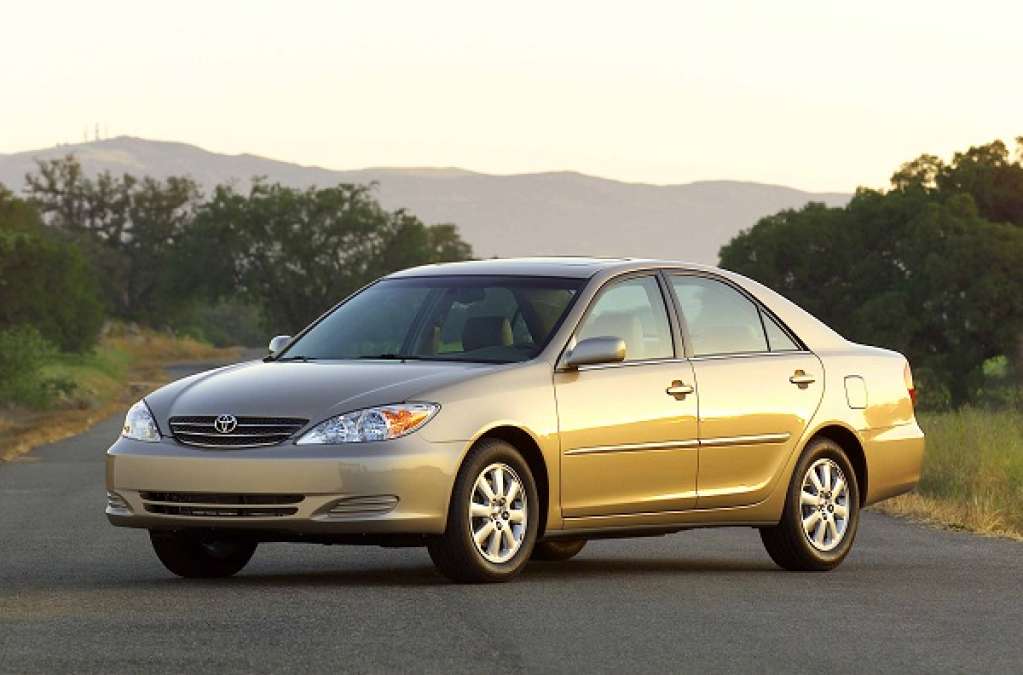Over the past decade or so the Toyota Camry became the main target of the sudden acceleration issue. Whether real or imagined, Toyota and the Camry paid a high price due to the issue. Today the Camry stands alone in its class with regard to safety. It the only top-selling, mid-size family car that earns the highest possible safety rating, the Insurance Institute for Highway Safety’s (IIHS) Top Safety Pick Plus (TSP+) rating. Accord, Altima, and Fusion cannot match the Camry’s top rating.
However, crash test results and safety rating are simply predictors of safety. These ratings don’t tell us anything about the actual safety results of that vehicle. One tool we do have is the death rate per vehicle number. This is a compilation of how many drivers were killed in a vehicle per thousand built, or per million built. When we look back using this tool, it is quite obvious that the Camry has never been less safe than other cars of its type. Let’s look at the actual data. All our numbers are based on IIHS reports that you can view at this link. Note that there is some overlap in the model years.
Camry Safety 1991-1995
Starting in 1991, the Camry was ahead of the pack. For model years ’91 through ’95, the Camry’s rate of driver deaths per million registered vehicles was 58. By comparison the Honda Accord’s was 65, the Nissan Altima’s was 78 and the Pontiac Grand Am’s was 114.
Camry Safety 1994-1998
This section covers the calendar years of 1995 through 1998. During this period, the Camry changed generations, and the new 1997 Camry was by far the safest vehicle using this metric. It’s rate was 37, the best in the mid-size class. Notably, the Camry was better than the Volvo 850 (39), the Accord (62), and Nissan Altima (78). In fact, the Camry’s rate was lower than every large car during that span.
Camry Safety 2000-2003
The Institute does not offer 1999 data*. The next IIHS report is for 2000-2003. Here the Camry again does very well. Camry’s rating of 56 is ahead of Accord (58), Sonata (57), and Altima (72). An interesting side note is that SUVs such as the Chevy Blazer (308) were not safer than mid-size cars despite the assumption they would be.
Camry Safety 2002-2005
In this time frame, the Camry gets safer still at a 55 deaths per million rating. The Camry is still safer than Sonata (73), Altima (79), and Grand Am (115). Notably, the Accord had an excellent rating these years of 35.
Camry Safety 2006-2009
In this time frame, the Camry for model years ’07 and ’08 is now even lower at 46. The Camry is lower than Malibu (67), Altima (70), and even the larger Nissan Maxima (82). The Accord changed its design, and its 2008 was a very low 19, although the total number of vehicles in the sample was very small by comparison to other time spans. Smaller sample sizes can skew results.
Camry Safety 2009-2012
2009-2012 is the most recent period for which deaths per million registered vehicles is available. For Camry, 2010 and 2011 model years are covered. The Camry’s rate during this period, for this generation car, drops to 35. This number is lower than Malibu (41) and Altima (44) and the new generation 2009-2011 Mazda6 (54). Notably, the Camry Hybrid was lower in this period as well as the last period though the sample size is limited and lower sample sizes can skew results. Incredibly, Toyota/Lexus had three vehicles during this span that were top sellers in their segment and had ZERO deaths. Those are the Lexus RX350 and Toyota Highlander AWD Crossovers, and the Large Toyota Sequoia AWD SUV.
Conclusion
So, from 1991 through 2012 was a US driver more likely to be killed in a Camry than in say, an Altima*? No. Was the Camry’s safety ever outside of the mainstream for its class? No. Was the Camry often a leader in safety, having a lower deaths per million rating compared to other top sellers in the class? Yes, it was. Draw your own conclusions from the numbers, but it is very difficult to find any statistical basis for calling the Camry anything other than a safety leader for its segment over the past two decades.
*As noted, IIHS did not offer data covering 1999 and does not mention why there is a time gap. However, the Camry design of that period is covered in the two reports before and after that period. The Camry was new in 1997 and then again in 2002.
Related Stories:
Toyota unintended acceleration settlement - Who does this make happy?
Toyota expands unintended acceleration recall, adding 154k Lexus SUVs
Toyota loses unintended acceleration case put before a jury
Toyota's $1.2 billion recall settlement could be worse news for GM
Toyota wins an important unintended acceleration case
Feds investigating 1.9 million Ford vehicles for unintended acceleration
Mazda recalls 217k+ SUVs for unintended acceleration risks
NHTSA reviews unintended acceleration claims on Honda hybrids





